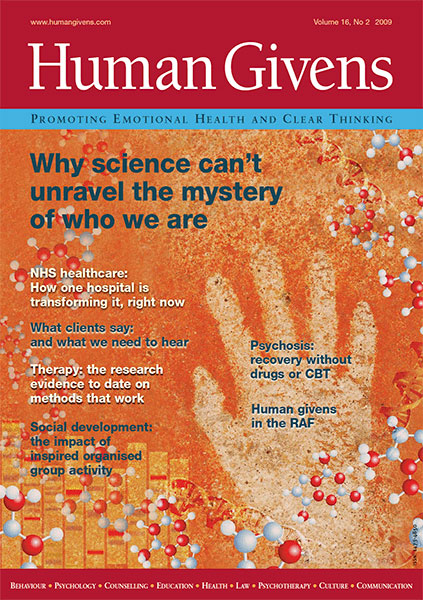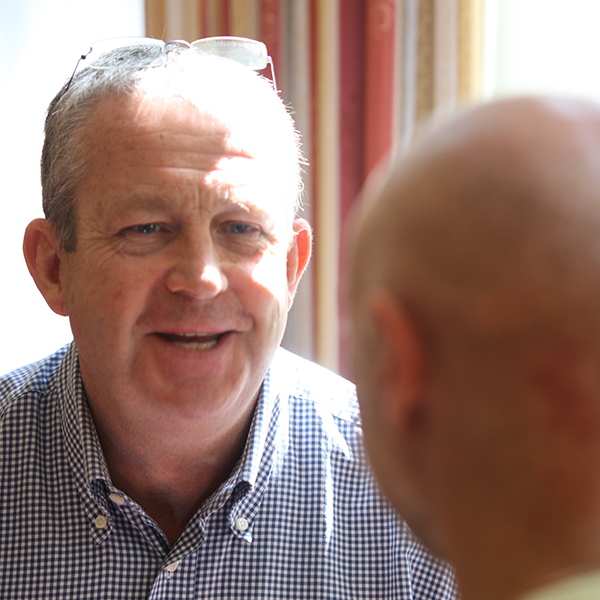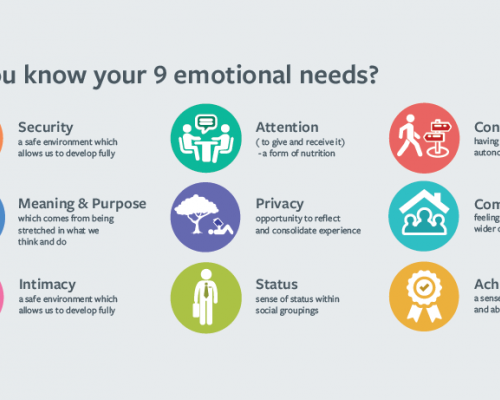Dancing out of step
Miriam Chachamu explains why she is always mindful of those who are not in the therapy room.
Aria arrives at her first therapy session in some distress. She tells of how her mother is very dismissive of Maria’s beloved little daughter, yet is affectionate with and interested in Maria’s brother’s young son. She gives plenty of examples. “She never wanted a girl herself,” Maria sobs. “She only wanted boys and it ruined my childhood. I never felt good enough, never felt truly loved. I don’t want her putting that misery on my daughter too.”
If you were that therapist, what possibilities might you consider along the way? Might you think about helping Maria broach the subject directly with her mother in a calm but firm way? Or might it seem a good idea for Maria to change her expectations of her mother’s behaviour? Might it be the best outcome if Maria decided to reduce her own and her daughter’s contact with her mother?
And might it also be possible that Maria’s story isn’t ‘true’ at all, although Maria believes it to be?
This last possibility is not one that always springs readily to mind. I realised this one day when I remarked to a therapist colleague, “I don’t believe any of the stories that my clients tell me”, and she was startled. What I meant was that I try always to remain aware that whatever clients describe to me comes from their own perspective. Their stories are their interpretation, their ideas, their explanations and points of view about whatever is happening in their lives. And their recollection of past events is further skewed by inaccurate memory, which we all suffer from, and by their emotional arousal. I know that what I hear in the therapy room is not necessarily fact.
The angry boy
In my work with families, using the systemic family psychotherapy approach, which I am also trained in (see box), I have observed again and again how people so often have completely opposing views and interpretations of what happens to them and what it means. The first case that demonstrated this powerfully to me involved a mother of an eight-year-old boy. She was seeking help to deal with her son’s frequent anger outbursts. She also wanted both her son and herself to become more assertive towards her ex-husband, whom she had left a few months before. She explained that her ex-husband was financially unstable, emotionally abusive, alcoholic, unkempt, careless and reckless with their son. She gave plenty of examples to demonstrate this and insisted that the boy did not like his dad and did not wish to see him. Both her son and her own mother joined her at the next session and confirmed her account. The boy complained about his dad and insisted that he did not like him. His mother made it clear that she wanted her ex-husband out of the way as much as possible.
What is systemic family psychotherapy?
There are several schools of systemic psychotherapy, and no single universally agreed definition. However, what all systemic psychotherapists do agree on is that the focus of therapy is not the individual but the whole system within which the individual functions – in particular, their family. Many families come to therapy having identified one particular member as being ‘the problem’. Systemic therapists will usually move away from seeing this one person as ‘the problem’ and instead ask questions to help all family members become more aware of the way that their relationships function and how this may be related to the problematic behaviour that has been presented. Therapeutic interventions are aimed at helping all family members see each other’s perspective and think of ways that they can change their relationship patterns for the better.
Systemic practitioners rarely give direct advice. Instead, they ask questions to help their clients resolve their own concerns. They are careful not to take sides, and avoid expressing strong opinions, aiming instead to stay curious and help each family explore and create their own way forward.
Therapists usually see a whole family, or several family members together, and occasionally work with individuals. They may work with the family in pairs, and usually there are other therapists (whom the family will have also met) sitting in another room, behind a one-way mirror, following what’s going on. These other therapists may also offer their ideas to the family during the sessions, either by calling into the room by phone or by entering the room in person.
And then, along came the boy’s father for his own individual session. He was well presented, articulate, stated his commitment to his son and described how much he loved him and how devastated he was when his wife suddenly left. Financially unstable? Yes, he was in business, so his income wasn’t steady, and there had been difficult times in the past. Emotional abuse? Perhaps he was insensitive sometimes; he and his wife had quarrels, just as many other couples do, but she had never told him that the relationship was on the line. Alcoholism? He did sometimes drink, but not much and he rarely got drunk. He claimed that his wife’s mother had resented him from the moment she saw him and had tried to drive a wedge between him and his wife. His son absolutely loved being with him, he said, and this became obvious to me when I later saw the two of them together. There were no anger outbursts from the boy when he was with his father.
I was completely shocked. I had heard the mother’s story over five whole sessions and had got it confirmed both by her mum and by the boy. Now it had all been turned upside down.
So whose description was right? If I had only ever seen the mother, it would have been easy to accept that she needed to become more assertive towards her ex-husband and to have focused on helping her become so. But once I had become aware of his perspective, I would have had to doubt that this would be a helpful goal.
It is natural, as a human givens therapist, to focus on needs and how they aren’t or are being fulfilled in someone’s life, and on whether a person has been traumatised by the events they are describing and, if so, whether the rewind technique may help, and so forth. But because I have also trained in systemic family psychotherapy, I tend to wonder what the other people my client talked about might, in their turn, think about my client. What would the client’s ‘controlling’ father or ‘inconsiderate’ boss say about the person sitting in the chair in front of me? I still sometimes catch myself accepting my clients’ account of events without too much question because it is so much part of human nature to do so. However, I hardly ever feel the blood rushing to my head and my tummy churning when I listen to clients’ horrific stories about things that were done to them because, when I remind myself that what I am hearing may not be fact, just my client’s truth, I find it easier not to get drawn in.
The skewed lens
I want to make it clear that I am not dismissive of clients’ suffering and I am not saying that their accounts of difficult past experiences are not genuine because they are described or perceived only from their own point of view. Even though experiences and memories are subjective, the suffering associated with them is real. And, of course, many abuses do happen and leave their mark, and I find the rewind technique very useful for dealing with their distressing aftermath. But, on the other hand, we know that memories can be exaggerated or can even be completely false. For the purposes of this article, I am leaving child neglect, abuse, and other forms of violence aside and concentrating on lesser complaints, such as controlling parents, bullying peers, critical bosses or inconsiderate partners.
We all have pre-conceived ideas about people in our lives and interpret what they do according to these ideas – as if we were looking at the world through a skewed lens. I was reminded of this only a few days ago when I received an email from a friend, the tone of which sounded to me as if she did not like a talk I had given on parenting, which she had attended. Then, almost immediately, I thought, “She is a great friend and a lovely person. I’m sure she didn’t mean it that way,” and completely forgot about the matter. A few days later, an apologetic email arrived: “I reread what I wrote and thought it could be taken as if I did not appreciate your talk, but I didn’t mean this at all”. By that time, I truly had no recollection of what she was referring to. Because I liked her as a person, I gave the original email a favourable interpretation, which allowed me to forget about it. I had looked at her email through a rose-tinted lens. I am sure that, if a similar email had come from a person I hardly knew, I would have responded very differently. Similarly, our clients interpret the interactions they have with people in their lives according to the feelings and opinions they already have about these people. And they experience these interpretations as fact.
I find a particular metaphor I once came across very helpful in understanding relationships: it described them as a dance, in which each dancer responds to the other dancers’ steps. All the dancers are responsible for the quality of the dance. So, usually, when things go wrong in a relationship, the participants – and, sometimes, other people in their lives – carry the responsibility for it. (However, saying that responsibility is shared does not necessarily mean that it is shared equally. Some people, of course, have more power than others and, therefore, have more responsibility.) Part of my job as a therapist, as I see it, is to increase my clients’ awareness of the lenses through which they view other people and the world, and to make them pay attention to their relationship dance. They can then question whether the lenses they are using are distorting reality and whether they are useful – then evaluate their dancing steps and change them accordingly. Their dancing partners are likely to change their steps too.

When working with families, I routinely get to see a variety of perspectives. Sometimes there is a disagreement about whether the family has any problem at all – and, therefore, whether there is really any need for therapy. Even when there is an agreement about there being a problem, each family member is likely to have a different opinion about what it is, why it is happening and what could be done about it. Typically, all involved justify themselves and want the others to change. Time and time again, it becomes apparent how different these people’s perspectives are and how unaware they can sometimes be of the needs of the significant others in their lives. This is what has led me, as a human givens therapist working with individual clients, to stop taking for granted whatever my clients bring into the therapy room. I question everything much more.
Blaming the therapy
Some therapists may wonder why I put so much emphasis on this. After all, for human givens therapists working with individuals, the client in front of them is the top priority. It is that person’s needs that count. It is unlikely that the therapist will be seeing the important others in their clients’ lives anyway, so there is little possibility of finding out what they think. But, as we all know, the wellbeing of our clients is strongly linked to the quality of the relationships they have with people in their lives. Any intervention that may damage these relationships may do more harm than good and this could, despite all best intentions, occur.

For instance, many of us may have had clients who blamed the breakdown of their relationships on therapy – either that which they had engaged in previously or, more often, that which other people in their lives had engaged in. I certainly have had clients who blamed individual therapy for the break-up of their marriage or for destroying long-term friendships. One such case was that of a woman whose daughter-in-law’s therapist believed that my client was not respecting the daughter-in-law’s boundaries, and that the latter needed to stand up for herself. The therapist supported her client in limiting contact with her mother-in-law. Mother-in-law was left hurt and bewildered, feeling that she was never given a chance to put her point of view across. It has to be wondered whether her daughter-in-law was the better in the long run for her decision to distance herself and her family – her husband’s relationship with his mother became strained and her young son lost the possibility of developing a strong relationship with his grandmother.
It could be that, with good communication (where needs are stated rather than the other person being blamed), people initially deemed to be annoying or inconsiderate or unkind to our clients might become a resource to support them. One client I worked with complained to me that her boss continually put her down and made disparaging comments about her in front of colleagues and clients. When we looked into it more, from the boss’s perspective, it turned out that the boss didn’t think her qualifications were sufficient to enable her to do her job properly. Instead of engaging in the ‘confronting the boss and being assertive’ or ‘considering a new job’ conversation that I might otherwise have had with her, she realised that her boss might have had a point. As a consequence of this understanding, she went back to her boss and said something like, “I want to do my best at this job and I understand that you think that I need to learn a lot more in order to progress. Can you recommend to me what I can read or what further courses I can take to fill this gap? Maybe you will be willing to mentor me through this process?” Her relationship with her boss has completely changed as a result – the boss stopped being rudely dismissive and started teaching her instead.
Similarly, in the case of Maria, gentle questioning resulted in her realising that a lot of her stress and distress was due to her struggling, as a single parent, to hold down a job and be a good mum, and that she felt her own mother could help her more. She remembered that, far from only wanting a boy, her mother had encouraged her as a child to be as ambitious as her brother in her hopes for her life but that she, as an uncertain and confused adolescent, had interpreted that as pressure at the time. Once she had calmed down, she could also see that her mum was particularly gooey-eyed over her grandson because he was only 11 months old, whereas Maria’s daughter was six, and the interaction was different. Maria resolved to talk to her mum about her need for more support.
We all, of course, aim to help our clients see possibilities that they hadn’t considered before. But sometimes, I wonder if we may miss the opportunity to do this because we are misled by what we ourselves construe to be facts, rather than perspectives.
Parallel universe
On a more philosophical level, and again leaving abuse and violence aside, I often used to wonder how it was possible for a certain segment of the population – people who came to therapy – to be so hurt, bullied, cut off or treated inconsiderately and unfairly by others while doing nothing to deserve this. It sounded as if a parallel universe existed some-where, full of vicious, disturbed people who were harming our therapy clients and never thought they needed therapy themselves. It took me a while to realise that many of my clients hurt others, whether knowingly or not, in the same way that they themselves got hurt. However, in their minds, they were fully justified in whatever they were doing. They were very aware of what was done to them but underestimated, or sometimes did not even see, how they might have hurt others. If the other people in their lives ever came for therapy, their stories would be very similar to the stories that my clients told.
So, when working with clients, I try to consider the needs of everybody in my clients’ lives, including family, friends and colleagues, and help them find a way forward that will better meet everybody’s needs. When a client’s relationship with ‘significant others’ improves, the client will be happier too. As we all know, it is nearly impossible for a person to be happy while family, friends and colleagues are anxious, depressed or distant.

Our clients, however, are usually strongly attached to their opinions, points of view and stories about the world and the people in their lives. They know that their boss is unreasonable, their mother controlling, their child difficult and their partner just doesn’t understand. This is their truth, and they use this ‘truth’ to explain to themselves and to others whatever goes wrong in their lives. “I have low self-esteem because my father always preferred my brother.” “I was bullied at school, so I became a loner.” Perhaps you have heard some of this from clients of your own. But helping a client understand that perhaps their father did not prefer their brother or that the bullying incident they experienced was quite minor can pose a huge challenge to their sense of self. It requires a big cognitive and emotional shift and a lot of courage from the client, and there is a fine line between challenging clients’ views effectively and losing rapport. I try to walk it by constantly acknowledging my clients’ individual experience, while asking leading questions intended to shake the mental construction that they have made for themselves.
Below are a couple of techniques for shifting a perspective on a relationship. I personally find them very useful and hope others may do so too.
1. Asking questions about another’s perspective
The therapist asks questions that put a client in the position of a person they are having difficulties with. The purpose is to get the client to doubt the opinions they have about that person and it may also help the client appreciate why this person is behaving as they do. The client may then be able to have a conversation with the person where they state their needs without resentment and criticism. And, as we know, when people do not feel they need to defend themselves, they are more likely to listen. Below is an example of this technique.
Client: My mother never loved me.
Therapist: Could you give me some examples of what she actually did that makes you think that?
Client: She never took any interest in my studies, kept criticising everything I did and had endless comments about my appearance. She is still critical of me now. And she is very needy. She keeps blaming me for not ringing her enough and criticises me in front of my husband and my kids. She behaves as if I am still a little girl and expects me to do what she says.
Therapist: It sounds as if you are dealing with a difficult situation here. I’m sure this isn’t easy for you. May I ask you some questions to help me understand things better?
Client: Okay.
Therapist: Suppose your mum went to therapy herself or perhaps spoke to a really good friend completely honestly, and the therapist or the friend asked her, “Did you ever love your daughter?” What do you think she would say?
Client: She would say she loved me.
Therapist: Oh ... And, if this person then asked your mum, “How did you show your love to your daughter?”, what would your mum say then?
Client: She would probably say that she cooked for me and things like that, but that is not what I needed.
Therapist: So she showed her love in a way that wasn’t really helpful to you. It didn’t ‘click’ as love to you. You needed something else. And she criticised you all along.
Client: Yes.
Therapist: What else did she do to show that she cared about you?
Client: Well, I suppose she always took the trouble to give me good birthday parties when I was a kid. But she was so stressed that it spoiled everything.
Therapist: So she made an effort, but it didn’t quite work out.
Client: Yes, she did try but always destroyed it.
Therapist: If I were to say to her, “Your daughter told me that she feels you never loved her because you criticise her so much. Although you cooked for her and gave her good birthday parties, she never felt that you really loved her”, what do you think her reaction would be?

Client: She wouldn’t know what you were talking about. She thinks that the way she talks to me is normal.
Therapist: Why do you think she can’t see that this criticism is so damaging?
Client: I guess this is how her parents talked to her.
Therapist: I think you may have a point here. This is probably how many parents of the older generation spoke to their kids. But it wasn’t helpful to you.
Client: I think she is just absorbed in herself and has no idea what her criticism does to other people.
Therapist: Yes, that makes a lot of sense. You are probably right and this can feel terrible for people around her. Do you think it might be a good idea to explain this to her?
Client: I tried but it didn’t work.
Therapist: What did you say to her?
Client: I have often asked her to stop criticising me. And sometimes I lose my temper and shout at her, but then I end up apologising later.
Therapist: Asking her to stop criticising sounds like a useful message, but it doesn’t seem as if she is hearing it because she isn’t stopping! Maybe she needs to hear that you realise that she loves you, together with hearing that the way she communicates with you now is detrimental to your relationship? Maybe you can say something along the lines of “I know you love me, and you took good care of me over the years. But when you criticise me like this I feel as if you don’t love me at all”. Do you think having a conversation like this might be useful?
Client: I can try it.
Therapist: How else can you say to your mum that you realise that she has good intentions before asking her to change her ways? How can you say it, in your own words?
Will the client go and have this conversation with her mum? We don’t know. Once the therapy session is over, will the client still be open to believing that her mother did love her but expressed it inappropriately? We don’t know this either. But, as human givens therapists, we have the skills, if appropriate, to use deep relaxation during the session to rehearse and reinforce this shift.
2. Putting your client in someone else’s shoes
The following technique takes the previous one a step further. Here, we ask clients to ‘become’ someone else who is important in their lives and interview them as if they really were that person. This technique, called “Interviewing the internalised other”, was developed by Karl Tomm and further refined by others. I use this a lot when working with parents, as they are often so caught up in their own agenda that they find it difficult to see their children’s perspective.
Often parents stop this exercise midway, saying that they haven’t got a clue what to say. It is worth asking them a different question and reassuring them that they can just guess at what the other person would answer. Asking someone to take a guess is another way of asking them to think, because it is a means of releasing them from the need to find the right answer.
In the following example, Ben, the father of nine-year-old Sam, is interviewed as if he were the son.
Therapist: I’d like to do a little exercise with you to help you see what it might be like to be your son. I am going to ask you to ‘be’ your son for the next few minutes. There is no right and wrong way to do this exercise, Ben. You simply have to say whatever comes to your mind first.
Client: Okay.
Therapist: Hi, Sam!
‘Sam’: Hey.
Therapist: How old are you, Sam?
‘Sam’: Nine.
Therapist: What sort of things do you most like to spend your time doing, Sam?
‘Sam’: I like playing on my PlayStation.
Therapist: How often do you play it?
‘Sam’: Not much really. I’m only allowed to play it at weekends.
Therapist: And can you play it for as long as you like at weekends?
‘Sam’: No. And, sometimes, yes.
Therapist: What does that mean?
‘Sam’: Mum only lets me play for an hour. But Dad lets me play as long as I want!
Therapist: Oh. How does it feel to you when your mum and dad tell you different things?
‘Sam’: I don’t know.
Therapist: Take a guess, Sam. What might you be thinking when they tell you different things?
‘Sam’: I don’t think it’s fair that they say different things. I wish my mum would chill out and be like my dad.
Therapist: What happens when they disagree?
‘Sam’: Mum gets mad with Dad and they start shouting at each other.
Therapist: And how do you feel when that happens?

‘Sam’: I don’t know.
Therapist: Take a guess. Is it fun seeing them shouting?
‘Sam’: I hate it.
Therapist: Why do you hate it, Sam?
‘Sam’: I don’t know. I just hate the shouting.
Therapist: And so what do you do?
‘Sam’: I don’t know. I suppose I just try to block my ears and think about something else.
Therapist: Okay. Cut. You can go back to being yourself now, Ben. How did it feel being Sam? What did you learn from doing that?
This exercise can be very powerful because, to answer all these questions, the clients have to imagine and experience how the other person thinks and feels. Even if their guesses are not accurate, they almost always gain new insights and end up respecting the other person more. However, some people are completely unable to answer any of the questions. It is important not to present this as a failure but as an opportunity to become aware that they do not understand the person with whom their relationship is strained. This revelation can be quite shocking to them and they often resolve to have a conversation with that person, to try to understand them more.
As we all know, helping clients become more aware of the perspective of the people with whom they are having difficulties often creates a positive shift in their emotions and thinking. So, although saying, “I don’t believe any of the stories that my clients tell me” may, on first hearing, sound disrespectful, ultimately it is extremely respectful indeed. For, sometimes, it is only through a therapist’s taking nothing for granted that clients are empowered to make hugely important shifts in their lives.
Names and details of clients have been changed.
Miriam Chachamu practises privately as a human givens therapist and systemic family psychotherapist and is an accredited human givens supervisor. She is author of How to Calm a Challenging Child (Foulsham, £9.99) and a tutor for HG College.
This article first appeared in "Human Givens Journal" Volume 16 - No. 2: 2009
 Spread the word – each issue of the Journal is jam-packed with thought-provoking articles, interviews, case histories, news, research findings, book reviews and more. The journal takes no advertising at all, in order to maintain its editorial independence.
Spread the word – each issue of the Journal is jam-packed with thought-provoking articles, interviews, case histories, news, research findings, book reviews and more. The journal takes no advertising at all, in order to maintain its editorial independence.
To survive, however, it needs new readers and subscribers – if you find the articles, case histories and interviews on this website helpful, and would like to support the human givens approach – please take out a subscription or buy a back issue today.
Latest Tweets:
Tweets by humangivensLatest News:
HG practitioner participates in global congress
HG practitioner Felicity Jaffrey, who lives and works in Egypt, received the extraordinary honour of being invited to speak at Egypt’s hugely prestigious Global Congress on Population, Health and Human Development (PHDC24) in Cairo in October.
SCoPEd - latest update
The six SCoPEd partners have published their latest update on the important work currently underway with regards to the SCoPEd framework implementation, governance and impact assessment.
Date posted: 14/02/2024















